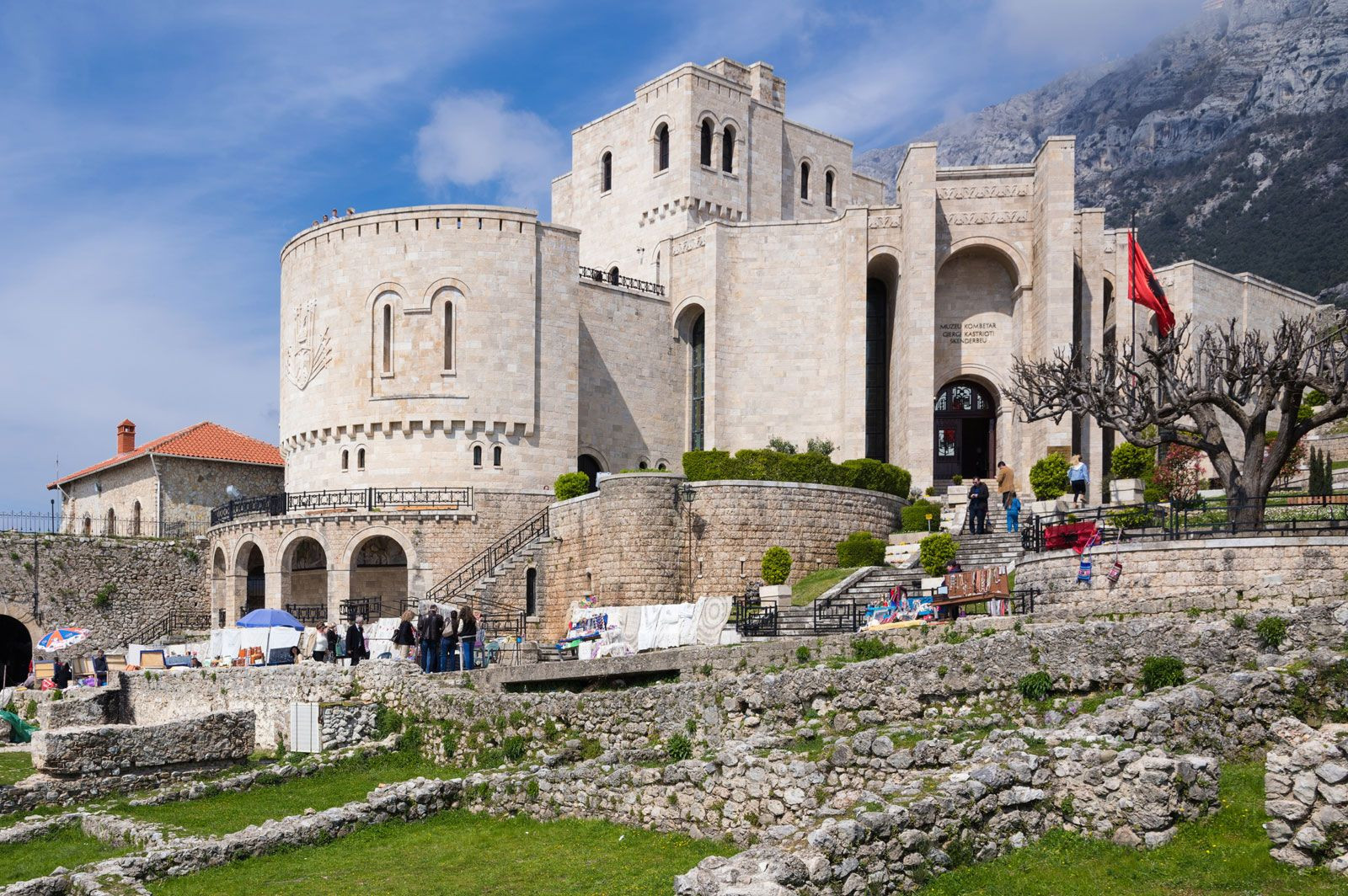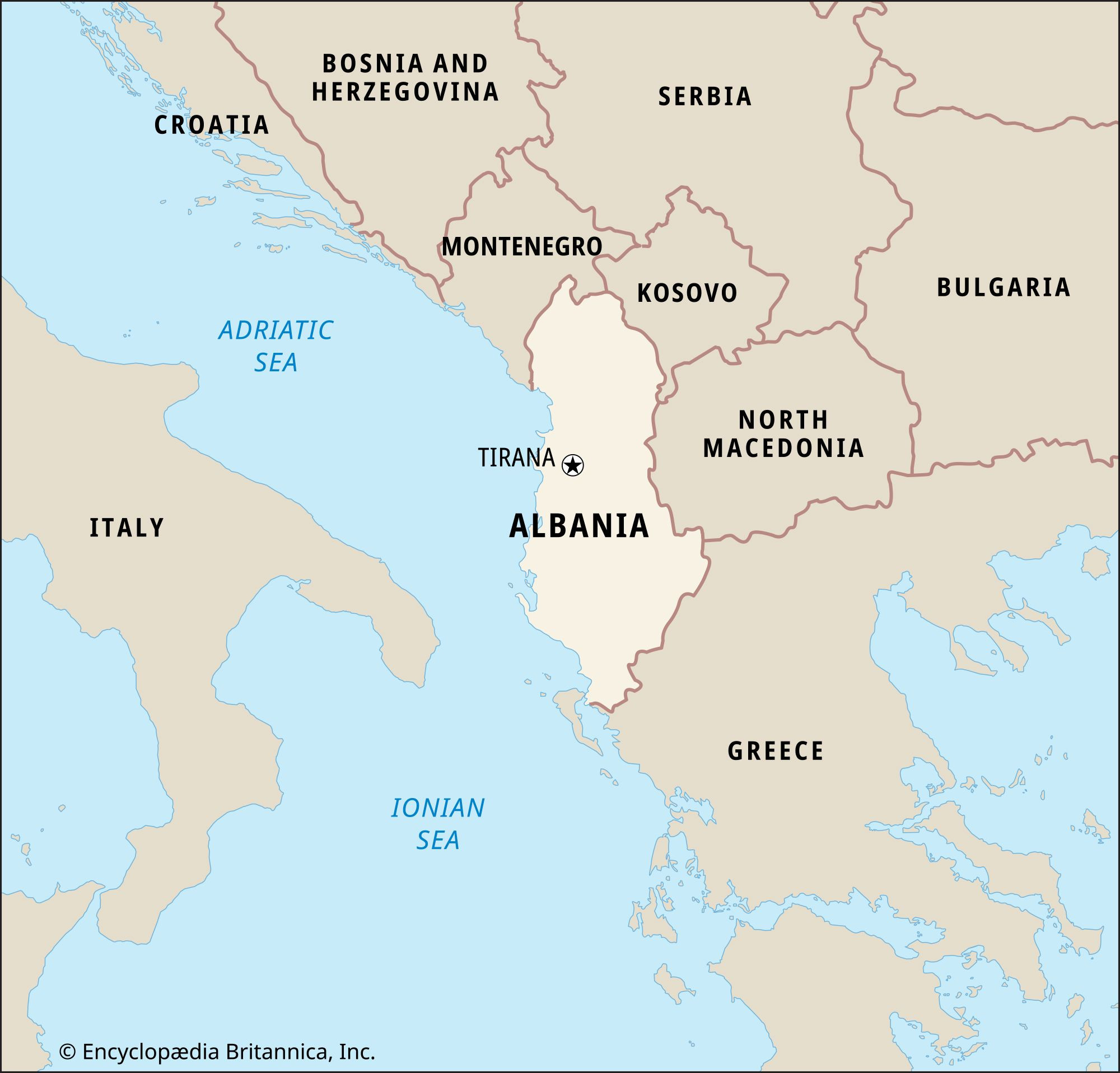Albania, officially known as the Republic of Albania, is nestled in Southern Europe, occupying the western portion of the Balkan Peninsula. Its geographical position is strategically significant, as it lies on the Strait of Otranto, offering a crucial southern entrance to the Adriatic Sea. The capital city, Tirana (Tiranë), serves as the vibrant heart of this Balkan nation.
Delving Deeper into Albania’s Location
To pinpoint “Where Is Albania Located” more precisely, consider its neighbors and surrounding seas. Albania is bordered by several countries: to the north by Montenegro, to the northeast by Kosovo, to the east by North Macedonia, and to the south by Greece. To its west, the Albanian coastline stretches along the Adriatic and Ionian Seas, both arms of the Mediterranean Sea, contributing to its rich maritime history and culture. This location in the Balkan region places Albania at a crossroads of European history and culture, influencing its development over centuries.
Albania’s Historical Significance Stemming from its Location
Albania’s location has been pivotal throughout history. Its position on the Adriatic and Ionian Seas has made it a strategic bridgehead for various empires seeking expansion. The ancient Illyrians, ancestors of modern Albanians, were aware of this strategic importance as far back as the Bronze Age. Subsequently, the Romans recognized its value, conquering the region in the 2nd century BCE. Following Roman rule, Albania fell under the Byzantine Empire, further highlighting its location as a point of interest for major powers.
Centuries of invasions by groups like Visigoths, Huns, Bulgars, and Slavs swept through the region, each vying for control due to Albania’s geographically significant position. Perhaps most impactful was the Ottoman Empire, which conquered Albania in the 15th century and maintained control for over four centuries. This Ottoman rule, while isolating Albania from Western Europe for a time, also shaped its unique cultural landscape.
Modern Albania and its European Identity
Despite periods of isolation, Albania’s inherent connection to Europe, defined by its location, persisted. The country declared independence in 1912, signaling a move towards re-engagement with the West. Even through periods of monarchy and communist rule in the 20th century, Albania’s orientation has consistently leaned westward. Today, Albania is firmly rooted as a European nation, valuing Western technology and culture while proudly maintaining its distinct Albanian ethnic identity and cultural heritage. Its location in the Balkans remains a defining aspect of its identity, bridging Eastern and Western influences.
In conclusion, “where is Albania located” is not just a simple geographical question. Albania’s location in Southern Europe, on the Balkan Peninsula, and bordering the Adriatic and Ionian Seas, has profoundly shaped its history, culture, and identity. It is a country whose story is inextricably linked to its strategic and culturally rich European setting.


 Albania location map highlighting its position in Europe and proximity to neighboring countries and seas.
Albania location map highlighting its position in Europe and proximity to neighboring countries and seas.